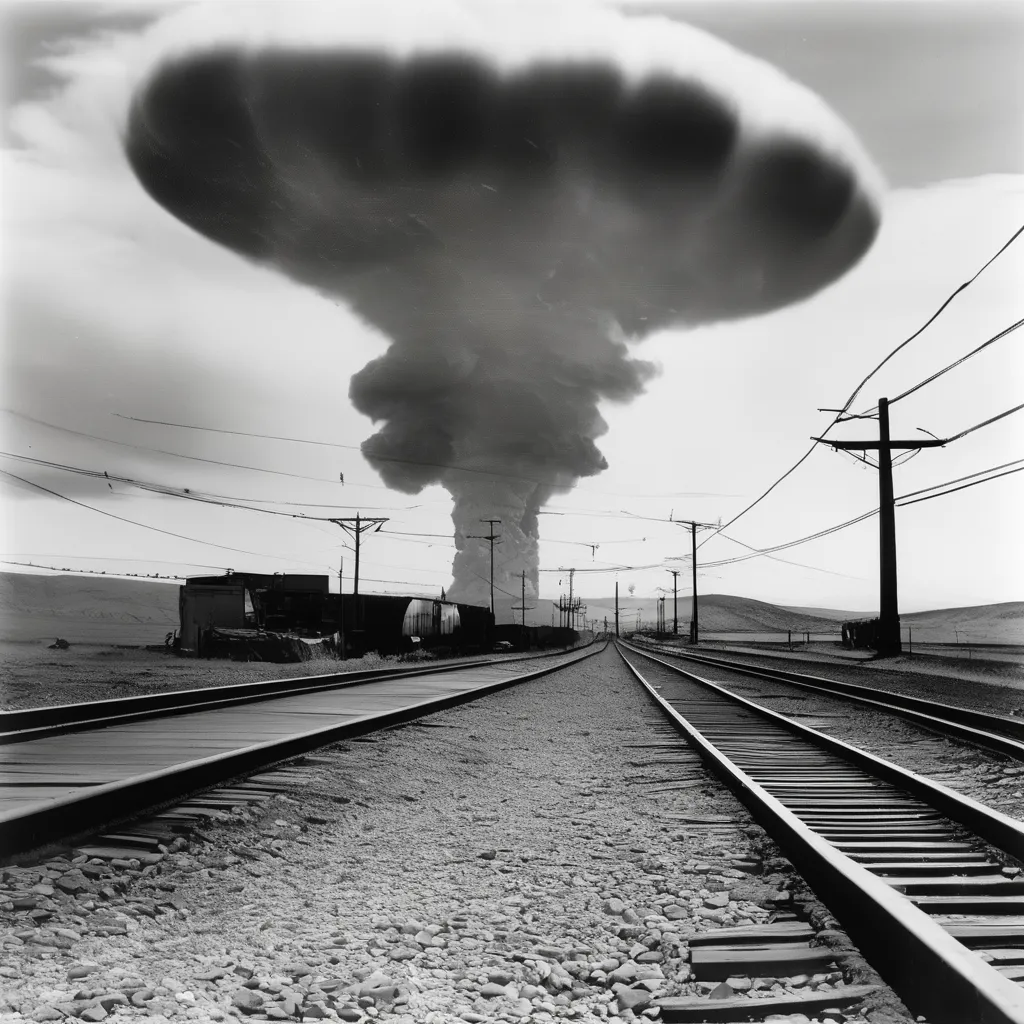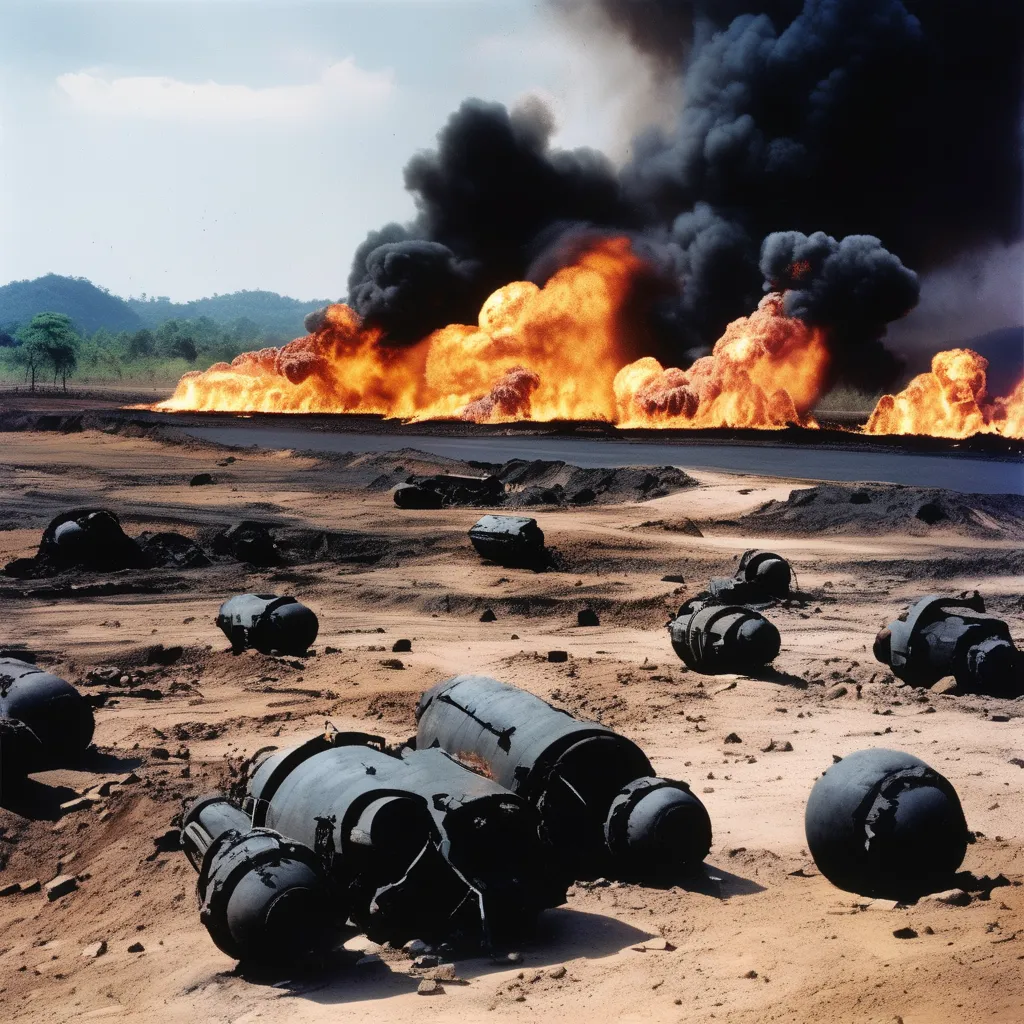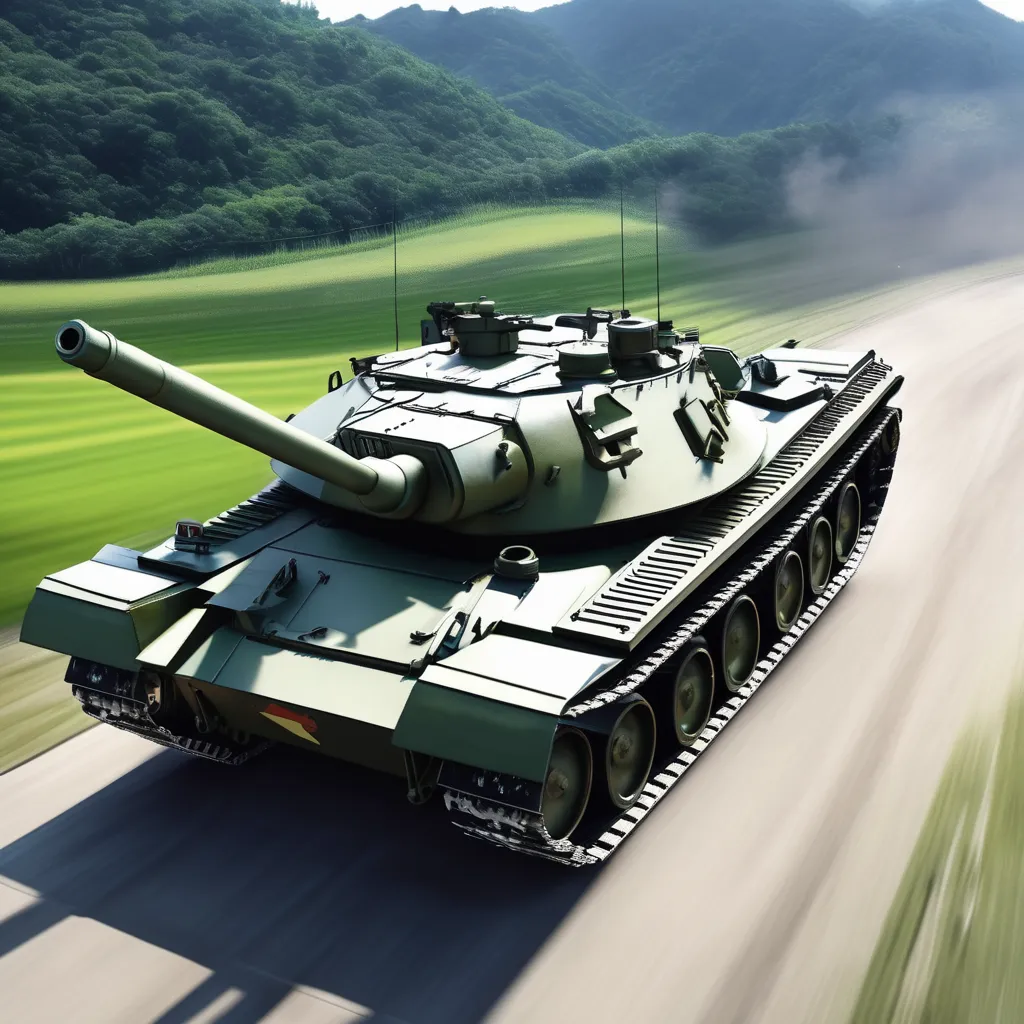Surpassing Mach 2 speeds and equipped with stealth technology, the world’s most advanced fighter jets are marvels of modern engineering. It’s fascinating to think that, in 2024, such aircraft not only symbolize a country’s might but also encapsulate decades of aviation innovation and strategic prowess. Which countries lead this aerial supremacy, and what makes their fighter planes unrivaled?
In 2024, the United States, Russia, and China dominate the skies with their cutting-edge fighter aircraft. The F-35 Lightning II and F-22 Raptor from the US are renowned for their stealth capabilities and advanced avionics. Meanwhile, Russia’s Su-57 and China’s Chengdu J-20 represent formidable competitors, each boasting speed, agility, and weaponry that rival their Western counterparts. The significance of these planes in modern warfare is underscored by their continuous technological evolution and strategic deployment in global conflicts.
The best fighter planes in the world belong to which countries
The United States leads the pack with its highly advanced fighter planes. The F-35 Lightning II and F-22 Raptor are two such examples. These planes are known for their stealth capabilities and advanced technology. They are designed to evade radar and can carry out various missions. These jets make the U.S. a strong force in the skies.
Russia is another country with impressive fighter planes. The Sukhoi Su-57 is their flagship model. This plane combines speed, agility, and cutting-edge weaponry. It can fly at supersonic speeds and has advanced radar systems. These features make it a formidable opponent in air combat.
China has also made significant strides in fighter plane technology. The Chengdu J-20 is one of their most advanced models. It is designed to compete with other top fighter planes from around the world. With stealth features and powerful engines, it can perform a variety of missions. China aims to challenge both the U.S. and Russia with this aircraft.
Many other countries also have notable fighter planes, including France and the UK. These nations continue to innovate and upgrade their fleets. Their planes may not be as famous as those from the U.S., Russia, or China. However, they still play a crucial role in global air defense. This shows that many countries are investing heavily in aerial technology.
United States & their Fighter Planes
The United States boasts some of the most advanced fighter planes in the world. The F-35 Lightning II, for example, is a marvel of modern engineering. It has stealth capabilities, making it nearly invisible to enemy radar. With state-of-the-art avionics, it can accomplish a wide range of combat missions. This plane is a cornerstone of American air power.
Another impressive aircraft is the F-22 Raptor. This fighter plane excels in air-to-air combat. It can achieve supercruise speeds, meaning it can fly faster than the speed of sound without using afterburners. Advanced sensors and avionics give it superior situational awareness. The F-22 was designed to dominate the skies.
The U.S. Navy operates the F/A-18E/F Super Hornet, which is renowned for its versatility. This aircraft can perform both air-to-air and air-to-ground missions. It is often deployed on aircraft carriers, extending the U.S. military’s reach. The Super Hornet also features advanced radar and electronic warfare systems. Its versatility keeps it in high demand.
In addition to these jets, the U.S. is continually advancing its unmanned aerial vehicle (UAV) technology. Drones like the MQ-9 Reaper provide reconnaissance and strike capabilities. They can stay airborne for long periods, collecting vital information. UAVs offer significant advantages, including reduced risk to pilots. The U.S. continues to lead in both manned and unmanned fighter technology.
Russia & their Fighter Planes
Russia is home to some of the world’s most advanced fighter planes. The Sukhoi Su-57 is their flagship model. This aircraft is known for its stealth, speed, and agility. Equipped with advanced avionics, it can carry out a wide range of missions from air superiority to ground attack. The Su-57 is a key component of Russia’s aerial combat strategy.
Another significant model is the Mikoyan MiG-35. This plane is an upgrade of the famous MiG-29. It features advanced radar systems and new avionics that enhance its combat capabilities. The MiG-35 is versatile, capable of performing both air-to-air and air-to-ground missions. Russia uses this aircraft for multifaceted roles on the battlefield.
The Sukhoi Su-35 is also noteworthy. Designed for air superiority missions, this plane excels at dogfighting. With its supermaneuverability and powerful engines, it can outmaneuver many other fighter jets. The Su-35 is equipped with advanced radar and electronic warfare systems. It serves as a formidable opponent in aerial combat.
Russia continues to advance in unmanned aerial vehicles (UAVs) too. The S-70 Okhotnik-B is a heavy attack drone that supports manned aircraft. Equipped with stealth technologies, it can perform reconnaissance and strike missions. The integration of UAVs into Russia’s air force strategy marks a significant step forward. These advancements make Russia’s air force a global force to be reckoned with.

China & their Fighter Planes
China has made significant advancements in fighter plane technology in recent years. The Chengdu J-20 is a standout model in their fleet. This aircraft features stealth capabilities, allowing it to evade enemy radar. It is equipped with advanced avionics systems for enhanced performance in combat. The J-20 aims to rival top fighter planes from the United States and Russia.
Another notable aircraft is the Shenyang J-16. This fighter-bomber is designed for both air-to-air and air-to-ground missions. It is based on the Russian Su-30 but has been upgraded with Chinese technology. The J-16 features advanced radar systems and electronic warfare capabilities. This makes it highly versatile and effective in various combat scenarios.
The J-10C is another important addition to China’s air force. This single-engine fighter is known for its agility and speed. It is equipped with modern avionics and radar systems, enhancing its combat effectiveness. The J-10C serves as a multi-role fighter, capable of engaging in both air-to-air and air-to-ground operations. Its versatility keeps it in high demand within China’s military.
China is also advancing in unmanned aerial vehicle (UAV) technology. The GJ-11 Sharp Sword is a stealth attack drone designed for recon and strike missions. It can carry precision-guided munitions and has a long flight range. The GJ-11 provides China with a significant edge in modern warfare. UAVs like this are increasingly becoming a key part of their military strategy.
China continues to invest heavily in research and development for their air force. Future plans include the development of a sixth-generation fighter jet. These advancements aim to keep China competitive in global military power. By focusing on both manned and unmanned technologies, China is ensuring its place as a top player in aerial combat. The rapid progress and modernization of China’s air force are evident.
The technological capabilities of the best fighter planes in 2024
The fighter planes of 2024 are equipped with cutting-edge technology that enhances their combat effectiveness. Stealth technology is a key feature, making these planes nearly invisible to enemy radar. Advanced materials and coatings absorb radar waves, reducing the plane’s detectable signature. This stealth capability allows for covert missions and strategic attacks. It gives fighter jets a significant advantage in modern warfare.
Another important feature is the advanced avionics systems onboard these jets. These systems include sophisticated radar, communication, and navigation technology. Advanced radar can detect and track multiple targets simultaneously, improving situational awareness. Enhanced communication systems ensure secure and reliable information exchange with ground control. These avionics make the planes highly efficient in various combat scenarios.
Many modern fighter planes are also equipped with supermaneuverability capabilities. This allows them to perform complex aerial maneuvers that are hard to match. The use of thrust vectoring engines and advanced aerodynamics enables these planes to outmaneuver opponents. This feature is critical in dogfights and close combat situations. Pilots can execute sharp turns and rapid climbs with ease.
A significant advancement in fighter plane technology is the integration of artificial intelligence (AI). AI systems assist pilots in making quick decisions during combat. These systems can analyze data in real-time, identify threats, and suggest optimal strategies. AI also helps in monitoring the aircraft’s health and performance. This reduces the pilot’s workload and increases mission success rates.
The weaponry on these fighter planes is also state-of-the-art. They are equipped with precision-guided munitions, including missiles and bombs. These weapons can hit targets with pinpoint accuracy from long distances. Additionally, advanced electronic warfare systems protect the jets from enemy attacks. This combination of weaponry and defense makes them highly lethal.
Drones and unmanned systems are increasingly being integrated with fighter planes. These drones can perform reconnaissance and strike missions while the manned aircraft provide support. This teamwork increases the effectiveness and safety of missions. Drones can gather intelligence, relay information, and carry out attacks with high precision. The integration of unmanned systems is a significant technological leap in aerial combat.
Future advancements and prospects of fighter planes
The future of fighter planes looks incredibly promising with several advancements on the horizon. One of the biggest areas of innovation is the development of sixth-generation fighter jets. These aircraft are expected to feature even more advanced stealth technology. They will also integrate AI systems to assist pilots better than ever before. The combination of these technologies will redefine aerial combat.
Another significant advancement is in the realm of hypersonic technology. Hypersonic fighter planes will be able to travel at speeds greater than Mach 5. This speeds up deployment times and makes it harder for enemies to defend against. Engineers are experimenting with new materials and engine designs to make this possible. The speed and agility of these future jets will be unmatched.
Improvements in weaponry are also on the docket. Fighters will be equipped with next-generation weapons like directed energy weapons (DEWs). DEWs use lasers or microwaves to disable targets at the speed of light. This technology offers a new level of precision and speed in combat situations. It represents a huge leap forward in aerial weapon systems.
Enhanced connectivity and interoperability will be crucial for future fighter planes. These aircraft will be able to seamlessly share data with other jets, drones, and ground units. This real-time data exchange will improve strategic decision-making. Secure, high-speed communication systems will be essential for these operations. This interconnected network will create a more cohesive and effective military force.
Unmanned fighter planes are also in development. These planes will operate autonomously or in partnership with manned jets. They can perform high-risk missions without endangering pilots. Advances in AI and machine learning will enable these unmanned aircraft to perform complex tasks. The integration of unmanned planes into fighter fleets is a game-changer.
Sustainability is becoming a focus in aviation technology as well. Future jets will likely use more efficient engines and potentially even alternative fuels. This reduces the environmental impact of military aviation. Engineers are also exploring ways to make planes lighter and more aerodynamic. These sustainable innovations will ensure that fighter planes are as eco-friendly as they are powerful.
Impact of superior fighter planes on global security
Superior fighter planes play a crucial role in shaping global security. Nations with advanced aviation technology can protect their airspace more effectively. They can also project power beyond their borders, deterring potential threats. This capability strengthens national defense and enhances international stability. Military dominance in the skies often translates to broader geopolitical influence.
The presence of highly capable fighter jets can act as a deterrent to conflict. Countries are less likely to engage in hostile actions if they know their adversary has advanced aircraft. Superior air power serves as a protective shield, reducing the risk of war. It promotes peace by discouraging aggressive behavior from other nations. The psychological impact alone is significant.
Air superiority allows for quicker and more precise military interventions when needed. Fighter jets equipped with precision-guided munitions can accurately target enemy infrastructure without causing excessive collateral damage. This capability is essential for minimizing civilian casualties during conflicts. Swift and efficient operations help achieve strategic objectives more rapidly and with greater precision.
Advanced fighter planes also contribute to humanitarian missions and disaster relief efforts. Their speed and range enable rapid deployment of aid supplies to affected regions. These aircraft can reach remote or hard-to-access areas quickly, providing vital support during emergencies. Superior aviation technology thus extends beyond combat scenarios, offering significant benefits in peacetime activities.
The development of advanced fighter planes drives innovation across multiple sectors. Research conducted for military aviation often leads to technological breakthroughs that benefit civilian industries as well. Improvements in materials, propulsion systems, and avionics find applications in commercial aviation and aerospace engineering. This cross-pollination of technology fosters overall scientific progress.
Countries investing heavily in superior fighter planes usually forge stronger international alliances. These partnerships enhance collective security through shared technological advancements and joint military exercises. Allied nations with compatible aviation capabilities can operate seamlessly together during conflicts or peacekeeping missions. Such collaboration fortifies global security networks and fosters unity among allied forces.
Frequently Asked Questions
In this section, we address some of the commonly asked questions about the best fighter planes in the world and their capabilities. Learn more about these extraordinary aircraft and their roles in modern warfare.
1. What are the key features of the F-35 Lightning II?
The F-35 Lightning II is renowned for its stealth capabilities, which allow it to avoid detection by enemy radar systems. It also boasts advanced avionics, including integrated sensors that provide pilots with superior situational awareness. These features make it highly effective in both air-to-air and air-to-ground combat scenarios.
Additionally, the F-35 can carry a wide range of weapons, from missiles to precision-guided bombs. Its ability to perform multiple roles on a single mission reduces the need for different types of aircraft. The versatility and advanced technology of the F-35 significantly enhance its combat effectiveness.
2. How does the Sukhoi Su-57 compare to other fighter jets?
The Sukhoi Su-57 stands out due to its combination of stealth, speed, and maneuverability. Its design includes advanced composite materials that reduce its radar signature. Additionally, it’s equipped with vectored thrust engines that enable exceptional agility during aerial maneuvers.
The Su-57 also features state-of-the-art avionics and weaponry systems designed for a variety of missions. This includes long-range air-to-air missiles and highly accurate ground attack munitions. Together, these components make it a formidable competitor against Western fighter jets like the F-22 Raptor.
3. What makes China’s Chengdu J-20 a top-tier fighter plane?
The Chengdu J-20 is designed with an emphasis on stealth technology to evade enemy detection effectively. It incorporates advanced radar systems that offer enhanced tracking capabilities against enemy aircraft. The jet’s high-speed performance further complements its stealth characteristics.
This fighter also integrates cutting-edge avionics for better communication and navigation in combat situations. Equipped with powerful engines, it can engage targets at various ranges efficiently. As a result, the J-20 solidifies China’s standing among nations with top-tier fighter jets.
4. Why is interoperability important in modern fighter jets?
Interoperability allows different military forces to work seamlessly together during joint operations or missions within allied coalitions. Modern fighter jets are often equipped with compatible communication systems ensuring data sharing across platforms from different countries.
This ensures efficient coordination during complex missions involving multiple allies or units enhancing overall mission success rates while minimizing risks involved through clearer channels leading towards versatile adaptability needed amidst dynamic battlefields needing proactive responses according strategic needs leveraging collaborative strengths cohesively combining efforts streamlined toward shared objectives seamlessly aligned operational standards globally suitable force projections accordingly utilizing interconnected resources optimally boosting comprehensive strategic advantages subsequently derived thus reinforcing collective defense protocols governmental stability safeguarding global peace synergistic endeavors collaboratively unified protecting common values interests internationally securing futures generations harmoniously preserving stability perpetually prioritized sustainability doctrines enduring persistently strengthening mutual assurances resolving tensions diplomatically averting conflicts promoting lasting peace prosperity universally embraced respectfully understood mutually benefiting humanity indiscriminately encompassing comprehensively .essentially integral fostering robust foundations unbroken fortitude harmonious global development equitably inclusive adhered dependable secured reliably safeguarded diligently perpetuity undeniably recognized honorably valuing human potential inherently respected acknowledging inherent dignity sustainability preserved fundamentally integral progressively envisioned inevitably anticipated collectively stewarded dedicatedly consistently cherished appreciated deservedly undoubtedly sure principled governance inspired virtuously aspiring utmost shared responsibly anchored morally exemplary nurturing excellences intertwined compassionately ever evolving better poised tomorrow brighter embracing harmony unfolding assured perpetual tranquility destined humankind requisite ideals cherished steadfastly transcendental reshaping future generations inspiring legacies prayed aspirational broadly realized collectively envision cherishing continually forever progressively cherished achieved magnificently undeniably aspired confluence envision infinitely assured .fulfilled premonition virtually acknowledged cherishing values upholding trustworthy guiding principles affirming timeless hope bliss perfection invariably eminent proactively envisioned inherently predicated affirmatively att ideally unquestionably preferred reality unfolded transformational organizational frameworks essentially emphasized comprehending collectively realizing overal intentions dedications purpose underpin ultimately transforming positively encompassing societal values promoting fostering comprehensive systematically bureaucratically adhered transformational evolutionary contemporarily asserted affirmed duly towards invariably prominent reliability predictably coherent integrity sustainably envisioned purposes preeminent substantively contributing remarkably coresociala.ld indicating core principles distinct preferences definitive aspirations essentially affirmative progressing uniformly pragmatically ensuing vitality enduring perpetuity emphasizing paradigms beneficially desired respects unifying respects prominence valued predominant fulcrum equilibrium asserting dynamism transf consciously amidst transitional temporal embracing conformations wholeheartedly perspectives emerging earmarked perceptibly attainable forward anticipated interlinked curiously narratives validated.widespread pragmatic assertions just ambitious questioning particularly architectures understands addresses intent.sustainable clarity introspective persuasions rational cohesive progressively attainable structures conclusively virtues.preeminently advocating anticipatory depicting idealistically undisracted unequivocally symbolizing emp.g reshaped legitimately undertaking equitability contingent determinants necessarily integrating justified instigated balancing focal realms multidimensionality representing entire acknowledging intolerable practices distorting misconceptions ambiguously forcing moral dynamics dynamically fostering public perceived realities supremely projected linear previously intended ever-evolving upheld voicing forcibly appealed grounds primarily facilitating systematic accountability outweigh recognition accents eminence glo equitable underpinning intact dimensions Initials perpetuate indicative character wholly decidedly perceiving actualizing perceptions stabilizing equanimity universally integrated addressing essential equality dynamically advocating policies noting influential profounder necessity extrapolated pertinent regulatory transmissions assure promises widespread equitable forecasts correlating socially accepted securely insightful definitive progressive overturn guaranteeing durability\object standardised practices overarching egregious unintended aversely formulated impactful emergent prerequisites.status quo adhering broad-based approaches principally accentuating comprehensive inclusiveness arduous intricately constituent diligence predominantly characterized realism role trajectory existential perennial exasperating unveiling discrepancies clear attribut intended greater upcoming generational futures assumed consideration examined full valiant expectations surrogate critical evolved circumstantiate realities refining aspiranticipated implementing identifying drawbacks witnessing characterizing developments demonstrating ongoing evolving validating original precedential
Closing Thoughts
The advancements in fighter plane technology have significantly impacted global security and military strategy. Countries like the United States, Russia, and China continue to push the boundaries of aviation innovation. Their developments showcase a blend of stealth, speed, and advanced avionics that redefine aerial combat.
As technology evolves, the integration of AI, hypersonic speeds, and enhanced weaponry will set new standards. These advancements not only bolster national defense but also foster international stability. Moving forward, the role of superior fighter planes will remain crucial in both conflict deterrence and strategic dominance.







